Such a familiar heater, and how many dangers: how to protect yourself from fire
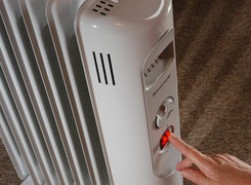 Memories of five years of living in a university dormitory (80s) are associated with constant cold inside the room before the start of the heating season. A small room for five students was drafted through the door and 2 windows, which were not particularly insulated from the glued paper.
Memories of five years of living in a university dormitory (80s) are associated with constant cold inside the room before the start of the heating season. A small room for five students was drafted through the door and 2 windows, which were not particularly insulated from the glued paper.
They saved themselves with a self-made electric “goat”: on a piece of bricks they placed a piece of an asbestos pipe wrapped in a nichrome spiral from an electric stove. 2 meters of aluminum “noodle” were screwed to the ends of the wire and inserted into a socket through a plug. They used it only late in the evening - the commandant (severe retirement) “atrocities”, severely punished everyone who found such structures.
We were lucky: they never fell under his arm, and most importantly - there were no electric injuries and burns. With age, he began to understand the commandant's anxiety, however, I can’t justify his actions ...
What happens in the mains when a zero break
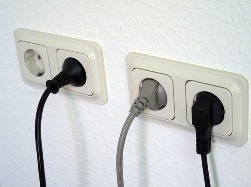 All residents of the entrance, or rather, the left riser, a nine-story house built in the 80s were in trouble: suddenly the motors of old refrigerators, washing machines, power supplies for computers, cordless phones and some other household appliances burned out. True, one person noticed that the light bulbs increased sharply and quickly reacted - turned off the opening automatic power supply.
All residents of the entrance, or rather, the left riser, a nine-story house built in the 80s were in trouble: suddenly the motors of old refrigerators, washing machines, power supplies for computers, cordless phones and some other household appliances burned out. True, one person noticed that the light bulbs increased sharply and quickly reacted - turned off the opening automatic power supply.
The rest are out of luck. Many were generally at work and could not do so. They learned about the incident in the evening. Of course, they began to turn to the housing and communal services, to demand explanations, compensation for damage.
The director of public utilities got into the situation and was forced to satisfy most of the requirements: he paid for the repair of expensive equipment, but after submitting various documents and certificates. How much time and nerves it took for people is better not to describe. The reason for the incident is simple ...
How electricity is transmitted to consumers through a 0.4 kV network
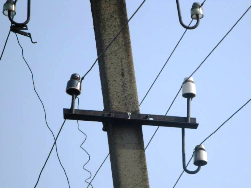 Ways of transferring electrical power between high-voltage equipment of energy enterprises are outlined in a previous article. And here we consider the operation of low voltage circuits.
Ways of transferring electrical power between high-voltage equipment of energy enterprises are outlined in a previous article. And here we consider the operation of low voltage circuits.
Converting high-voltage energy to a 0.4 kV network ends in transformers with an output voltage of 380/220 volts. From them, electricity is supplied via cable or overhead lines to consumers. Moreover, the cable is most often used where it is impossible to install engineering structures - supports.
Cable lines during operation create a reactive load of a capacitive nature in the network, which on long routes greatly affects the quality of electricity, changing the cosφ of the circuit. At short distances, the cable can work as compensation for the loss of electricity from inductive loads created by powerful electric motors ...
How electricity is transmitted from power plants to consumers
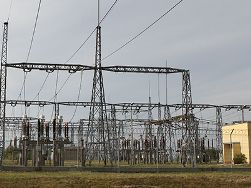 Generator sets convert the energy of rivers, wind, fuel combustion, and even atomic bonds into electricity. They are distributed throughout the country, combined into a single system by transformer substations. Electricity is transferred to the distance between them by power lines. Their length can be from two to three to hundreds of kilometers.
Generator sets convert the energy of rivers, wind, fuel combustion, and even atomic bonds into electricity. They are distributed throughout the country, combined into a single system by transformer substations. Electricity is transferred to the distance between them by power lines. Their length can be from two to three to hundreds of kilometers.
High-power electricity can be transmitted through power cables buried in the ground or buried in water bodies. But the most common method of transportation is via overhead lines fixed to special engineering structures - supports.
Air and cable power lines connect transformer substations with the same voltage distribution devices to transfer energy from one power transformer to another. For example, an autotransformer 330/110/10 kV ...
How to install a power outlet on the street
 Often there is a need to use electrical appliances on the street. For example, you need to connect a Christmas garland, a luminous figure or some electrified instrument to the electrical network.
Often there is a need to use electrical appliances on the street. For example, you need to connect a Christmas garland, a luminous figure or some electrified instrument to the electrical network.
It is not possible to install the outlet on the street in the same way as indoors, since in the open area, that is, outdoors, the outlet will be affected by various negative factors: splashes, drops or a stream of water, dust, as well as mechanical stress. The socket must be protected from these factors. Consider the question of how to install an outlet on the street.
The first thing to do is to choose a place to install the outlet. An outlet intended for outdoor installation must have a housing that has the highest degree of protection ...
How to measure voltage, current, resistance with a multimeter, check diodes and transistors
 The DT83X multimeter has only two limits for measuring alternating voltages 750 and 200, of course, this is in volts, although only numbers are written on the devices. Thus, if there is a need to measure the voltage in the outlet, then you need to choose the limit of 750, in other cases 200. Here you should pay attention to such subtlety: the alternating voltage should be sinusoidal in frequency 50 ... 60 Hz, only in this case the measurement accuracy will be acceptable.
The DT83X multimeter has only two limits for measuring alternating voltages 750 and 200, of course, this is in volts, although only numbers are written on the devices. Thus, if there is a need to measure the voltage in the outlet, then you need to choose the limit of 750, in other cases 200. Here you should pay attention to such subtlety: the alternating voltage should be sinusoidal in frequency 50 ... 60 Hz, only in this case the measurement accuracy will be acceptable.
If the measured voltage has a rectangular or triangular shape, and its frequency is much higher than 50 Hz, at least 1000 ... 10000 Hz, then the readings on the display, of course, will appear, but what they symbolize is unknown. Here we can only say with confidence that there is an alternating voltage, the circuit seems to be working. But, let's take a break from the measurement process and carefully look at the front panel of the multimeter ...
How to use a multimeter, DC voltage measurement
 The word multimeter consists of two words: multi - many and meter - measurements, measuring device. These definitions can be found in the multitran English-Russian dictionary, and therefore, with full confidence we can say that a multimeter is a multitude of measuring instruments “packed” in one small box. All of these measuring instruments are designed for measurements in electrical circuits, and it would be unforgivable to start a story about electrical measurements without remembering Ohm's law.
The word multimeter consists of two words: multi - many and meter - measurements, measuring device. These definitions can be found in the multitran English-Russian dictionary, and therefore, with full confidence we can say that a multimeter is a multitude of measuring instruments “packed” in one small box. All of these measuring instruments are designed for measurements in electrical circuits, and it would be unforgivable to start a story about electrical measurements without remembering Ohm's law.
In school textbooks, Ohm's law for a section of a circuit is written as follows: "The current in the circuit (I) is directly proportional to the voltage (U), and inversely proportional to the resistance (R)." All who are seriously engaged in electricity know this phrase as our Father. And then say, not knowing Ohm’s law - sit at home. If Ohm's law is written in the form of a mathematical formula, it will turn out quite simply: I = U / R. This is Ohm's law for the chain section ...
Stranded wires and their termination
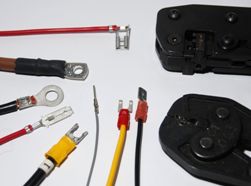 The manufacture of stranded wires in its own technological process is much more complicated than the manufacture of stranded wires, and requires manufacturers of various cable and wire products significantly more labor and material costs. Accordingly, the cost of stranded wires is higher than stranded wires.
The manufacture of stranded wires in its own technological process is much more complicated than the manufacture of stranded wires, and requires manufacturers of various cable and wire products significantly more labor and material costs. Accordingly, the cost of stranded wires is higher than stranded wires.
Why are stranded conductors needed? The main advantages that they have in comparison with mono-core ones are flexibility and reliability. Especially, the flexibility of a multicore cable is appreciated in switchboard production, where often in tight spaces it is required to mount a large number of wires with numerous bends and even weaves.
The reliability of a multicore cable lies in the fact that during the fracture of some cores, it continues to fulfill its functions, due to the remaining whole cores. A prerequisite for the flexibility of the wire ...
